Affiliate links on Android Authority may earn us a commission. Learn more.
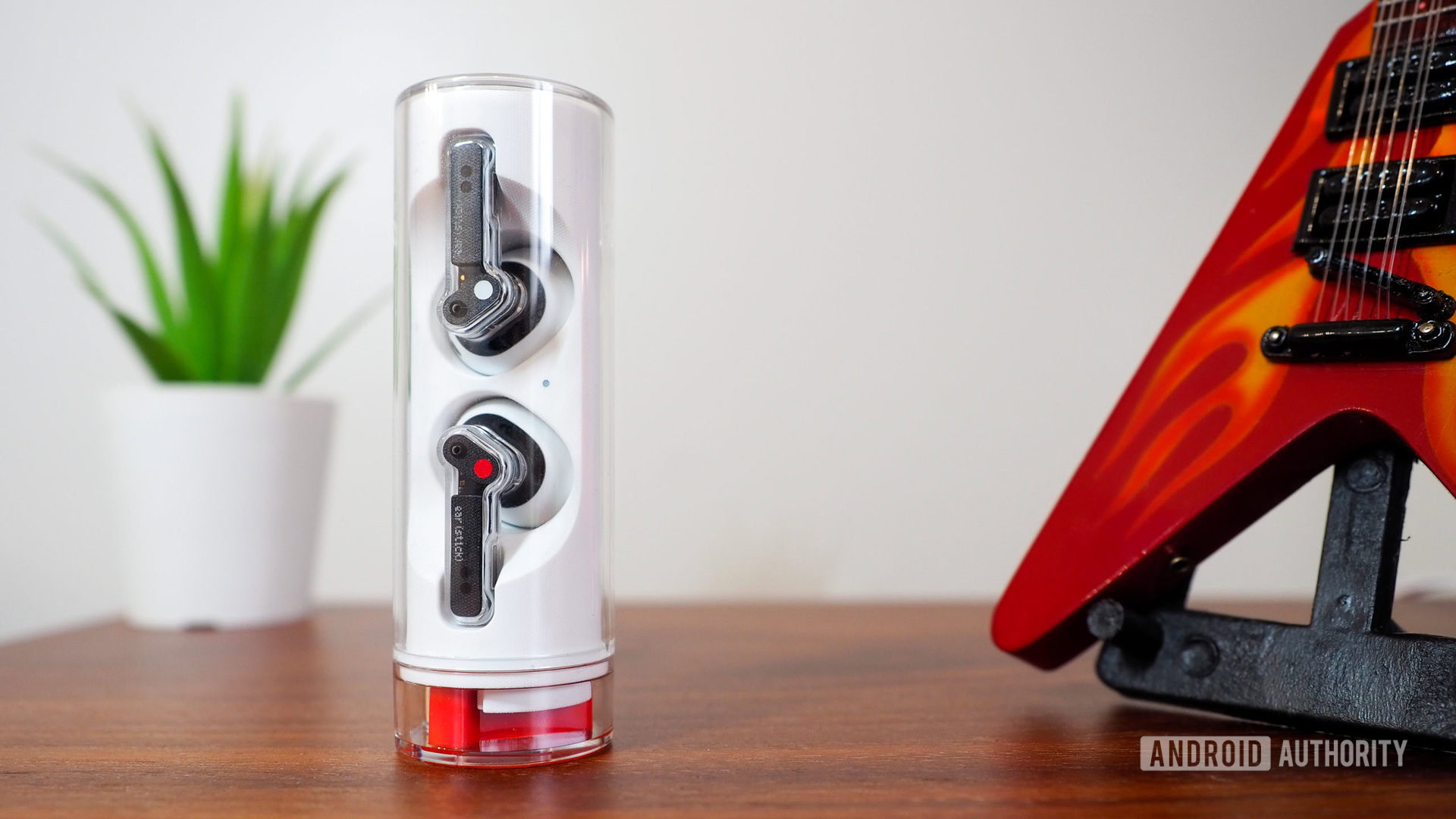
Nothing Ear Stick review: Great if you don't like sticking things in your ears
June 21, 2023
Nothing Ear Stick
What we like
What we don't like
Nothing Ear Stick
One year after it debuted the Nothing Ear 1, Carl Pei’s company introduced another audio product, this time dedicated to people who want to hear their tunes but dislike the feeling of having something lodged in their ears. The Nothing Ear Stick are another take on true wireless buds, with an open design that sits outside your ear canal. And although it may seem that this is the only distinction between the Stick and the Ear series, that isn’t the case. Nothing packed several refinements into this new pair in the hopes of justifying the $99 asking price, but are they enough? Let’s find out in Android Authority‘s Nothing Ear Stick review.
What you need to know about the Nothing Ear Stick
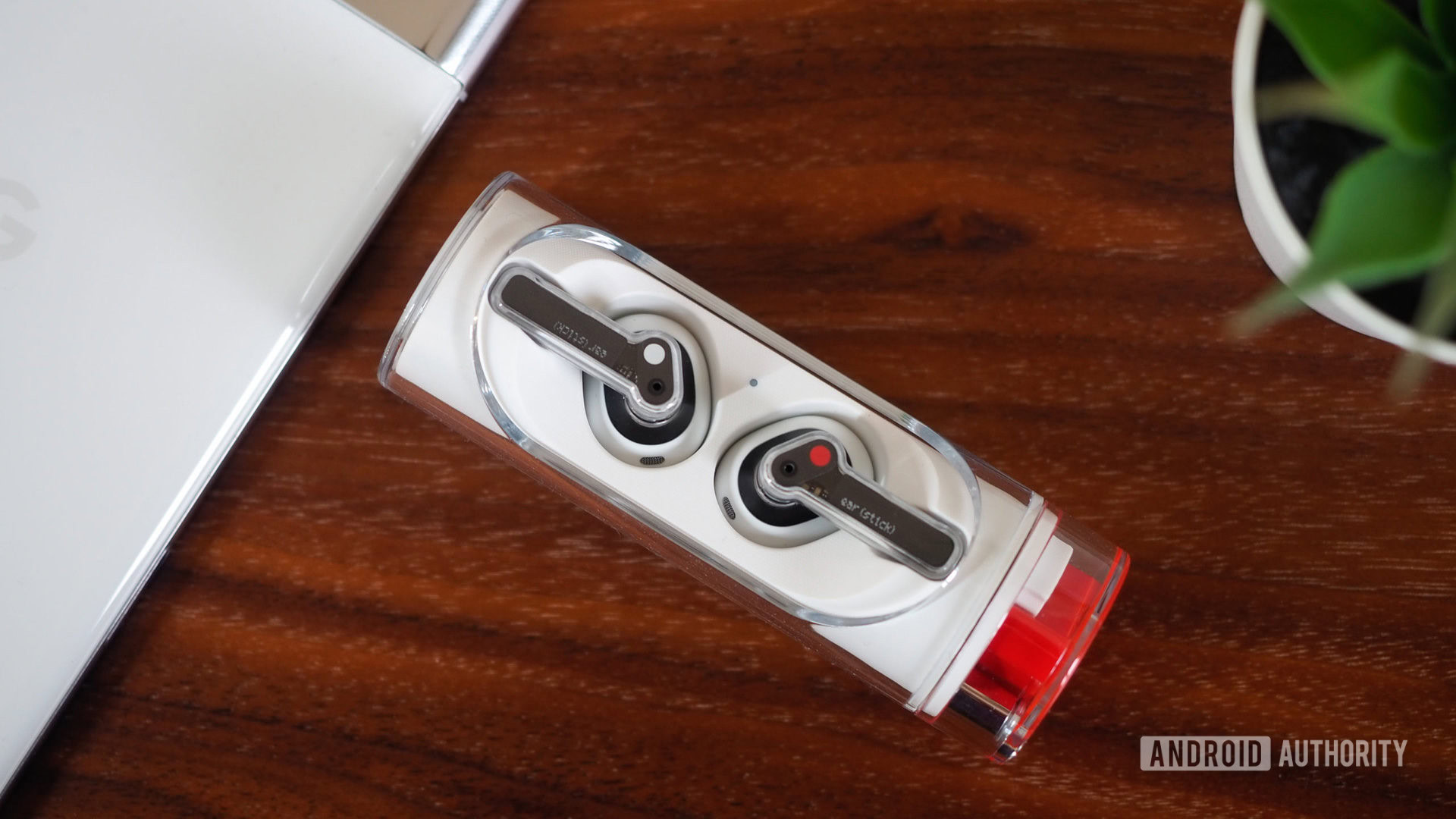
- Nothing Ear (Stick): $99 / £99 / €119
The first thing that’ll catch your attention with the Nothing Ear Stick is the tubular case. Nothing wants you to look at it as a fashion accessory first and a tech object second — it succeeded. The case is reminiscent of lipsticks; you twist the bottom part to open it, then twist to close it. It’s an excellent fidget too — I’ve often found myself opening it and closing it for no reason other than it was at arm’s reach.
Nothing’s design ethos still dictates everything about the case and the buds inside it. Transparency, white and black with some red accents, and a dot matrix font for every branding element. You can’t confuse this style with any other company’s.
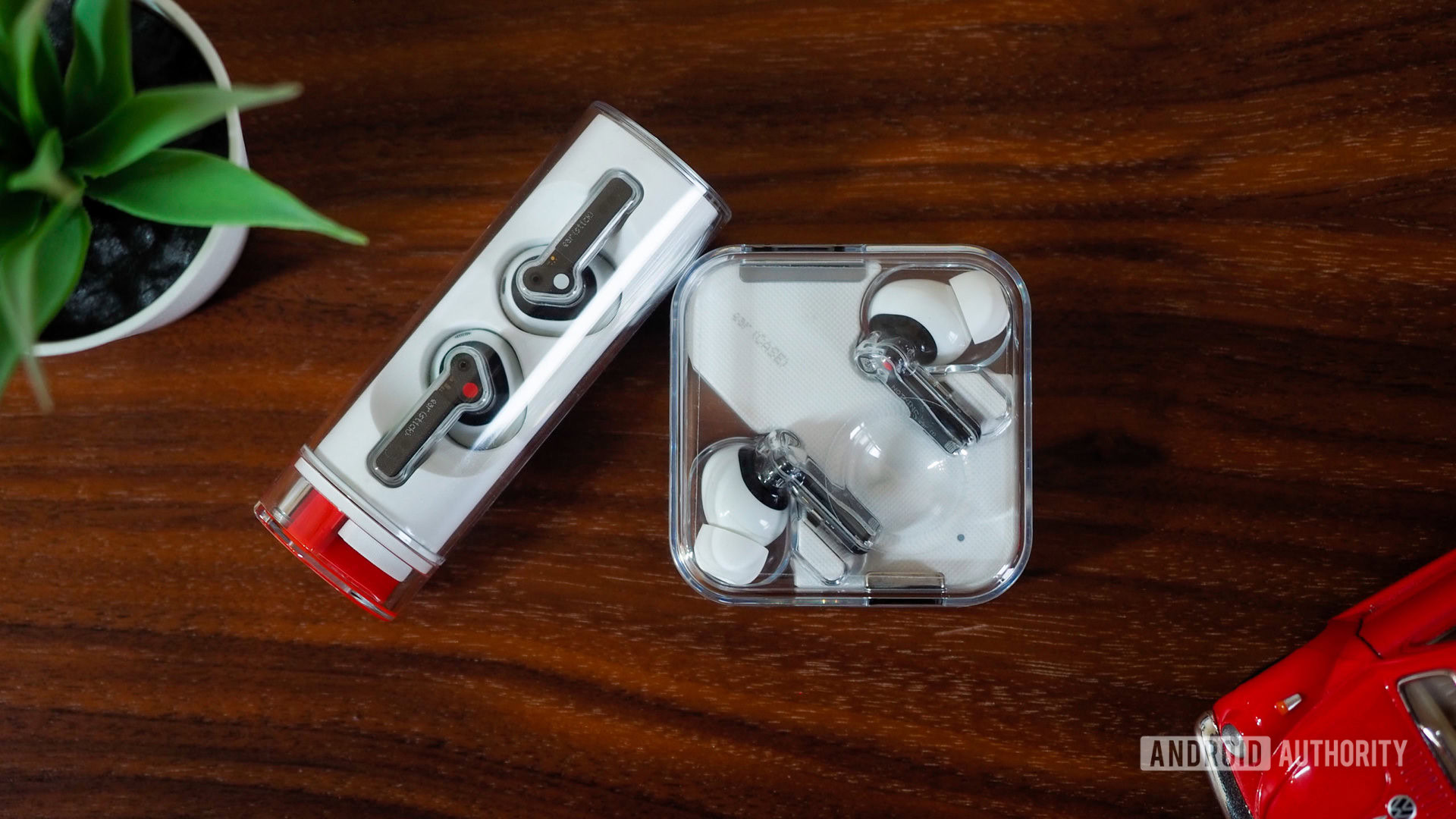
Inside, the buds look nearly identical to the Nothing Ear 1 and 2, save for the absence of a silicone tip. Instead, the whole bud is made of plastic with three visible grills that hide the speaker and new microphones.
A large custom-built 12.6mm driver inside each earbud was added to compensate for sound leakage.
A new custom-built 12.6mm driver sits inside each bud, and it’s supposedly large enough to compensate for all the sound leakage from the open design. There are three microphones to cancel any background noise that’s louder than three decibels and make sure you sound very clear during calls. Obviously, those microphones don’t play any role in active noise cancelation (ANC) while you’re listening to audio — the design simply makes any isolation impossible.
However, Nothing is sticking with AAC and SBC. Unlike the new Nothing Ear 2 that added LHDC, there’s no support for any high-resolution Bluetooth audio codecs here. But at least they have a low-latency setting that should reduce lag while playing games, even on the AAC and SBC codecs. In my tests, I noticed a small, very small latency reduction with this setting enabled on my Pixel 7 Pro.
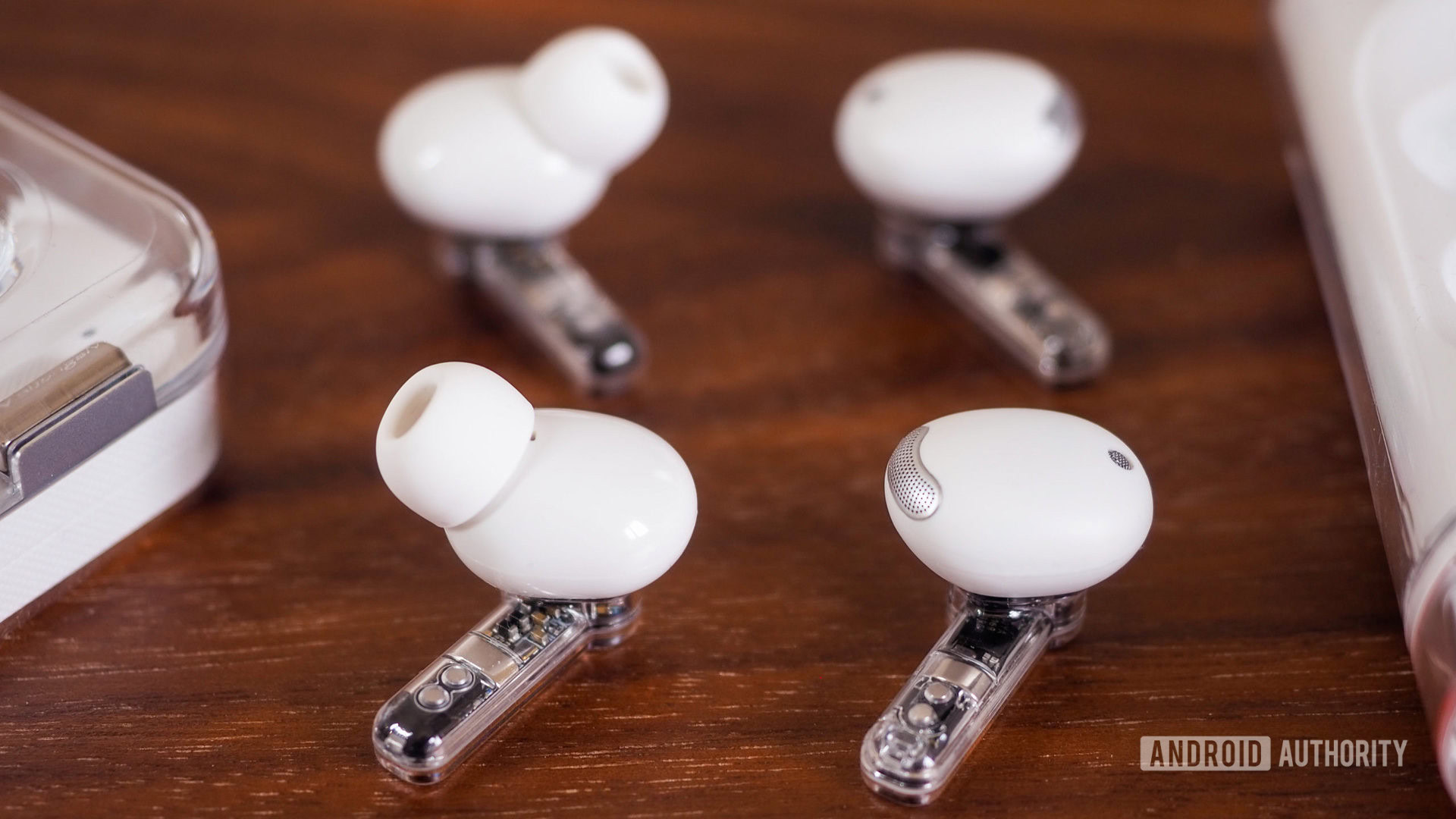
For controls, Nothing has opted for a new pressure mechanism instead of swipe gestures — a system it also adopted for the Ear 2. You have to hold the stem of each earbud between your fingers and squeeze it to trigger any actions. It’s a more deliberate action that should reduce, if not remove, any accidental swipes.
The Ear Stick also benefit from a slightly prolonged battery life — seven hours without the case. With the case, this can go up to 29 hours. Our tests were in-line with these numbers. A two-hour listening session at 70% volume drops the battery down to 70% on average, and the case lasts around two weeks on a charge with a couple of hours of daily use. Both of these are solid stats, though keep in mind that ANC is typically a huge drain for true wireless earbuds — something the Ear Stick do not have. Nothing has also been improving these numbers: A recent update added about 40 minutes of battery life for phone calls, specifically.
The Ear Stick show up natively in the Quick Settings area of the Nothing Phone 1, but they can also connect to any Bluetooth device. They support Google’s Fast Pair, which simplifies connections to any subsequent device after you’ve paired them with the first one under your Google account. However, there’s no Multipoint support like on the new Ear 2, so you can’t pair these to two different devices at the same time.
Nothing’s new app lets you customize the different controls and pick between four preset equalizers. You can also use a custom EQ to set the base, mids, and treble to your liking.
Available only in white, the Nothing Ear Stick retail for $99, the same as the original launch price of the Ear 1 (which was later raised to $149). A few deals have dropped their price down to $79 so be on the lookout for those if you want to save some bucks.
What’s good?
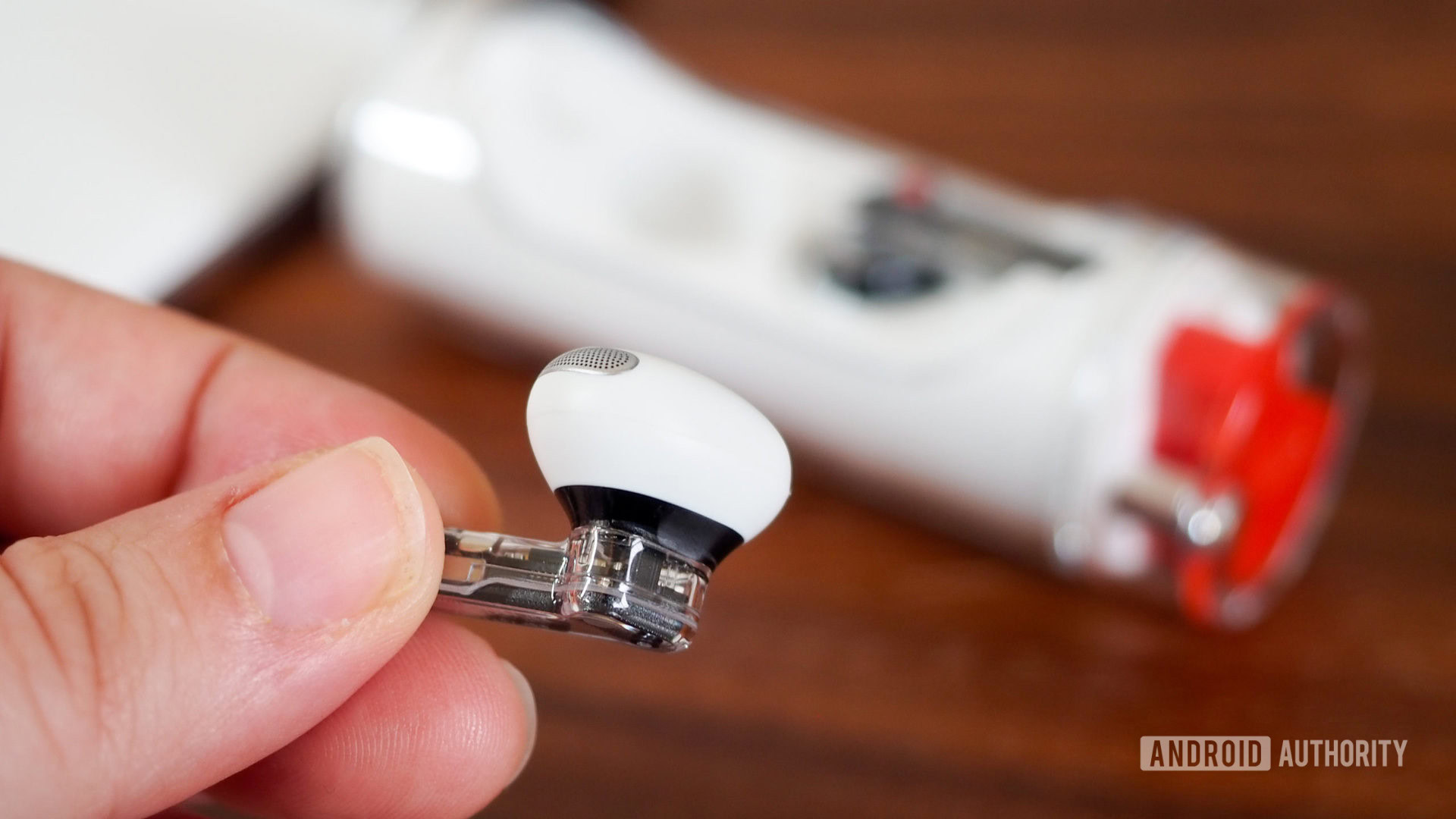
Each time you take the Nothing Ear Stick out of your pocket in public, you’ll get a glance or two because these aren’t your typical earbuds. The case’s design is unique and it’s incredibly fun — and a bit addictive — to twist it open and closed all the time.
Nothing says it tested the Ear Stick’s shape on 200 different ear models to make sure it’s comfortable and secure. For my specific ears, the fit is almost as pleasant as the Ear series, which I’ve repeatedly lauded as the most comfortable buds I’ve ever worn. The Ear Stick just don’t exert pressure anywhere in my ears, which is a very weird feeling to get used to. And even during long listening sessions, there’s not a moment where I felt that rising clogged-ear sensation that pushes me to remove some in-ear earbuds every hour or two.
The Ear Stick are a great pair of true wireless buds for anyone who just doesn't like any in-ear annoyance.
This is a great pair of true wireless buds for anyone who just doesn’t like any in-ear annoyance. The lack of a tip to stabilize them does keep me on my toes, however, but more on that in the next section.
As someone with medium-length loose hair that often triggers earbuds’ gestures inadvertently, I welcome Nothing’s move to pressure-based controls. All of the pausing, volume changing, and track skipping I’ve done on the Ear Stick so far has been intentional.
The Ear Stick also sound surprisingly loud and clear. Volume-wise, it’s only a little less loud than the fully in-ear Ear 2, despite the more open design, though I couldn’t tolerate it that high for long. At around 70%, there’s still enough volume to enjoy your music, podcasts, or audiobooks.
The mids and highs are definitely clearer than the Ear 1 and on par with the Ear 2. The bass is only slightly improved; the open design tends to bring down the thumping feeling of bass with it, but Nothing’s “bass lock” algorithm balances that out. However, it has received a boost in a recent update and is now a bit more impactful than before. And if you don’t like the default sound signature, there are three different presets and a custom equalizer to tailor it in 12-step increments (-6 to +6 for bass, mids, and treble).
Despite the open design, the Ear Stick sound surprisingly loud and clear.
Compared to the Ear 1, both the Ear Stick and Ear 2 show a marked improvement in the built-in microphones’ audio quality. Voices come out clearer (though with some odd artifacts in calmer environments) and background noise is reduced, even when it’s erratic and inconsistent. I tested this out by recording a sample next to a Nest Hub that was playing wind, nature, fan, and thunderstorm sounds. While the Ear Stick and Ear 2 canceled out every bit of noise, the Ear 1 still let some of the louder thunders and noises come through.
Nothing Ear 1 microphone demo (Non-standardized):
Nothing Ear Stick microphone demo (Non-standardized):
Nothing Ear 2 microphone demo (Non-standardized):
Because of the buds’ design, transparency and awareness are default features. You don’t have to enable any setting to hear your surroundings, so you can — more or less — safely wear these on the street and at home without fear of missing out on a honk, bell, alarm, crying child, or barking dog.
What’s not so good?
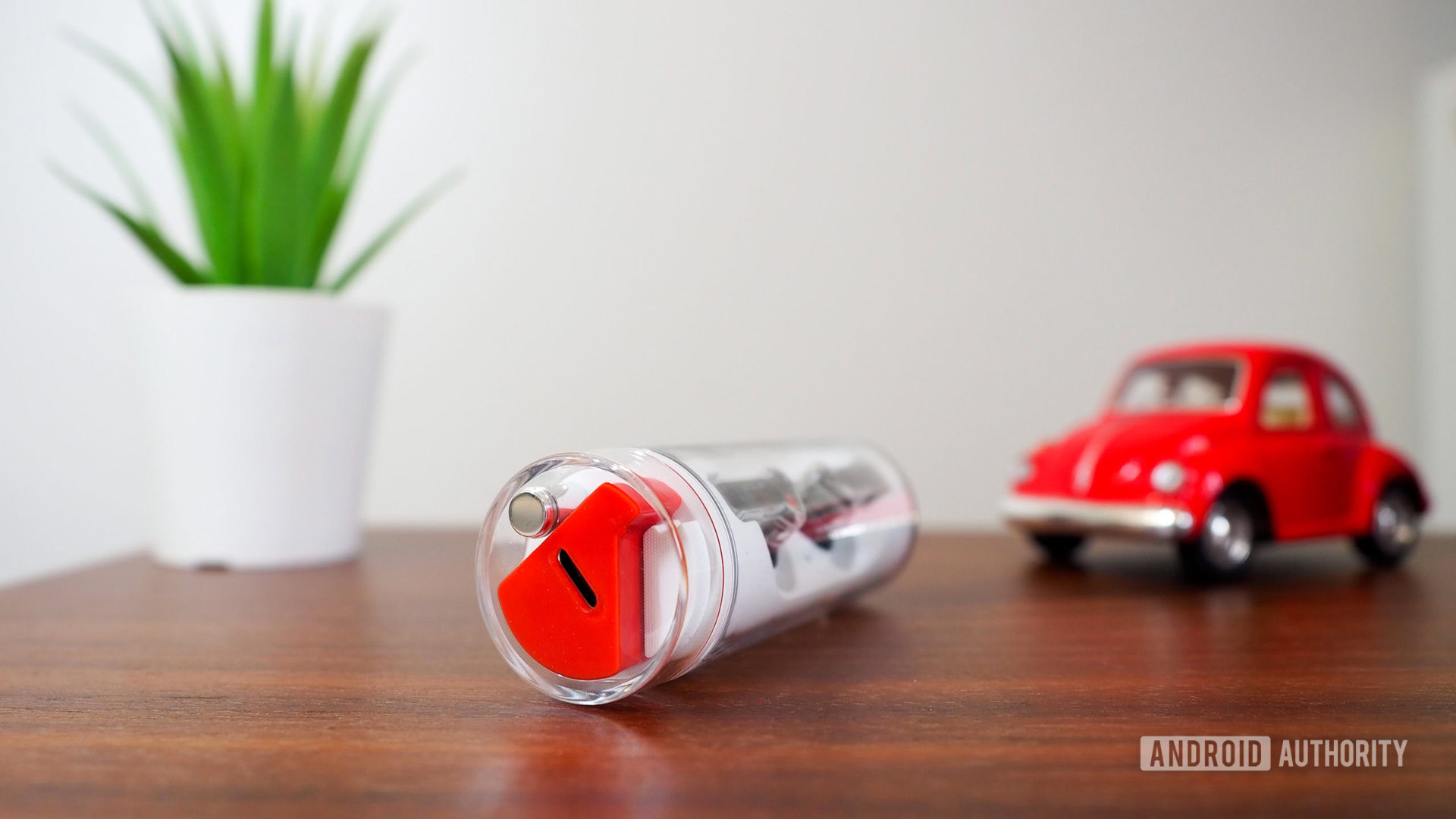
One side effect of the Nothing Ear Stick’s tubular case design is the lack of wireless charging. I’m used to plopping my Ear 1 or 2 case on a Qi pad at my desk, and I can’t do that with the Ear Stick. I have to be deliberate about plugging it in with a USB-C cable when I need to charge it.
The Ear Stick have a spiffy new case but it doesn't support wireless charging and collects dust and pocket lint.
Another side effect is the case’s propensity to pick up dust and lint. The grainy white plastic attracts small particles when the case is in your bag or pocket (or even sitting at your desk), then you twist it and everything gets carried inside. Thanks to the transparent plastic, you see every little annoying speck. I’ve already turned to a small air blaster — the same one you use on camera lenses — to remove some of the dust a couple of times.
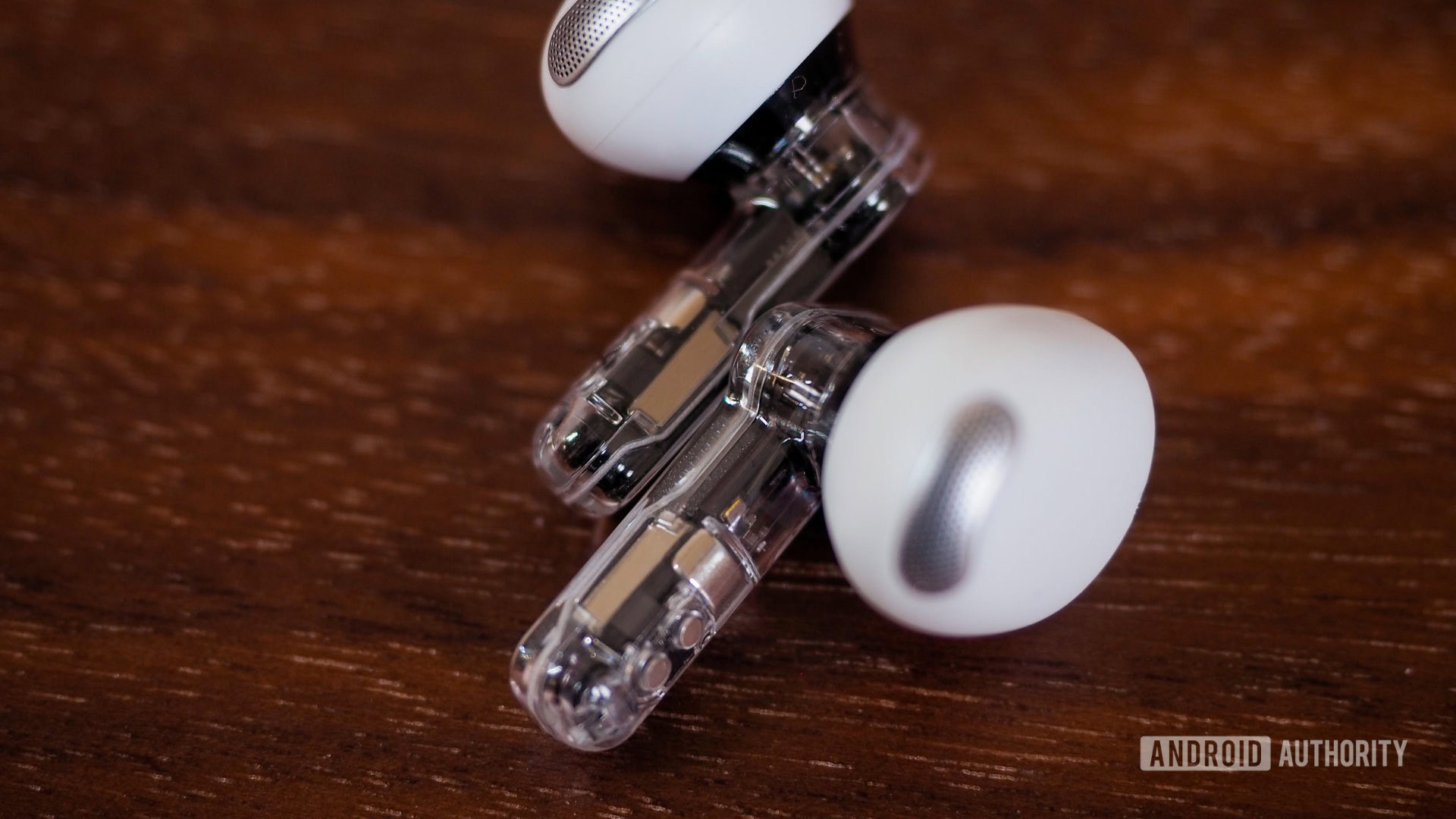
Moving on to the buds, the direction Nothing took with the open design creates two weaknesses. One is the lack of any stabilizing anchor for the bud inside the ear. They just sit there, free, unattached to anything. It always feels like they’re one minor nudge away from falling out. I’ve bopped and shaken my head many times without dislodging them, but that doesn’t mean they’re firmly stable. A flick of my finger on the stem takes them out. A bit of sweat will also cause them to slide right out. This isn’t the pair of buds you go on a run with or wear on a jam-packed subway.
The Ear Stick isn't the pair of buds you go on a run with or wear on a jam-packed subway.
Speaking of subways, the one time I dared wear them there, I couldn’t last longer than 10 minutes. There’s no isolation with this open-bud design. Zero. You hear everything, every little hum and drum and whir around you. Even at the loudest volume, I could still hear every deafening noise from the Parisian metro. As a matter of fact, the loud volume made the experience more painful; it was irritating to try to differentiate between the music and everything else going on.
One last weakness to keep in mind is the lack of Bluetooth Multipoint, a feature that’s made its way to the newer Nothing Ear 2. You can’t connect the Nothing Ear Stick to two devices simultaneously, and you can’t easily switch them from one to another. You’ll have to choose whether these are paired to your phone or computer (or tablet, smartwatch, TV, etc.) and be happy with that single choice.
Nothing Ear Stick specs
| Nothing Ear Stick | |
|---|---|
Size | Earbuds: 29.8 x 18.8 x 18.4mm Case: 87.1 x 29.8 x 29.8mm |
Weight | Earbuds: 4.4g Case: 46.3g |
Connectivity | Bluetooth 5.2 Google Fast Pair Microsoft Swift Pair AAC/SBC |
Sensors | In-ear detection Pressure sensor for controls |
Battery life | Earbuds: Up to 7 hours of listening Earbuds with case: Up to 29 hours of listening |
Charging | USB-C |
Speaker | 12.6mm dynamic driver |
Water resistance | IP54 |
Colors | White |
Nothing Ear Stick review: The verdict
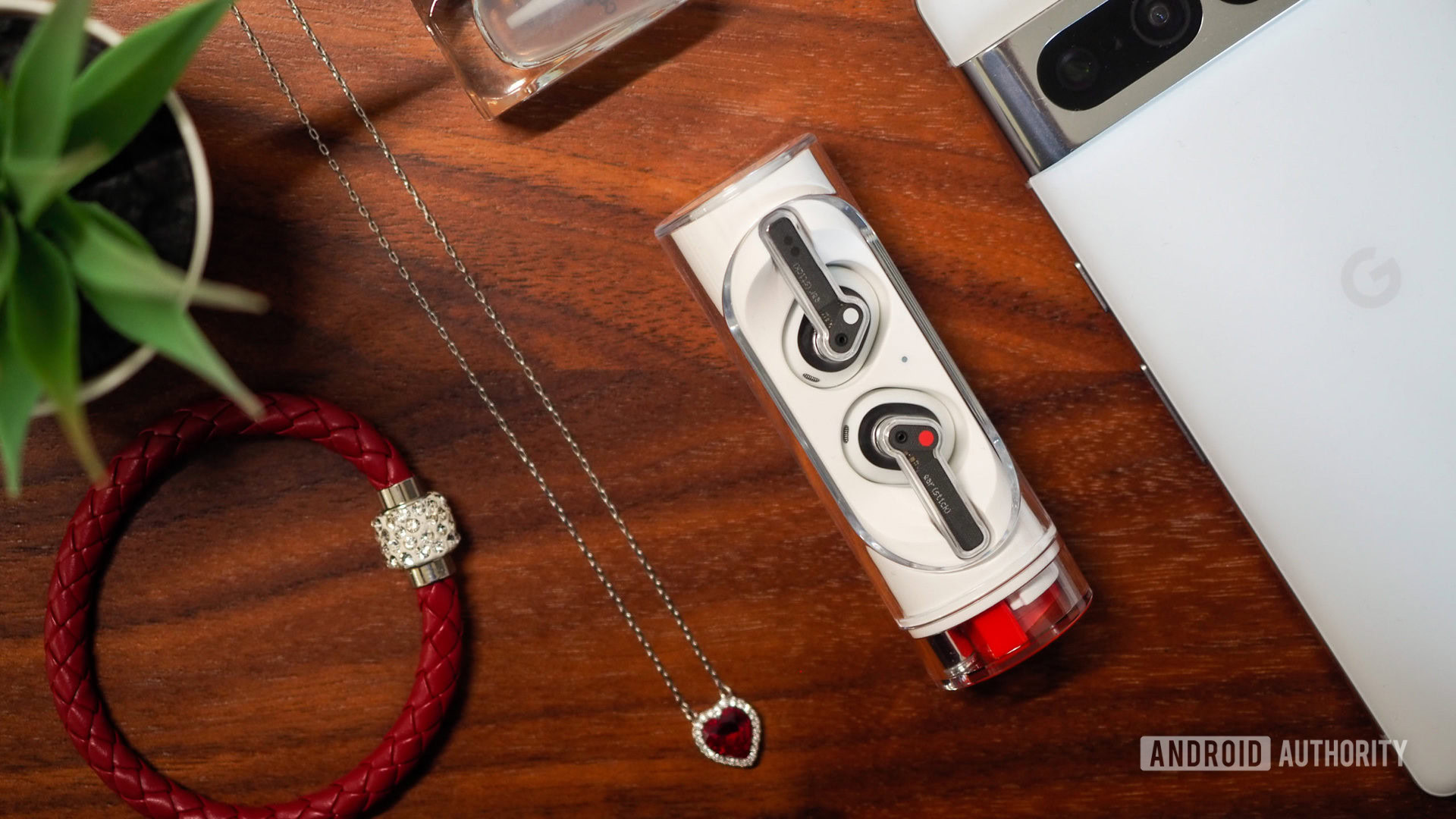
The Ear Stick are positioned in a pretty unique spot in the true wireless earbuds market. Competition in the semi-open and open-ear segment isn’t as fierce as the fully in-ear segment, despite some users’ demand for a pair of earbuds that don’t clog their ears or cause any discomfort while wearing them.
Nothing is offering an answer here with a pair of earbuds that can be worn for several hours with no pressure or pain and without skimping on sound quality. But in doing so and in prioritizing aesthetics over function, it ends up losing some important features like wireless charging and passive isolation.
Nothing's second pair of buds is more refined than the Ear 1, but it targets an entirely different market.
Ultimately, the Ear Stick proposition comes down to one simple question: Do you like sticking silicone or foam tips in your ears? If so, then you’ll probably dislike the hard plastic feeling of the Ear Stick’s buds, and you’ll miss the extra stabilization and passive isolation provided by a pair of in-ear buds. The lack of ANC, even if you don’t always use it, is another big loss to contend with. In that case, the Nothing Ear 2 ($149 at Amazon) will give you a very similar experience to the Ear Stick with an in-ear design and a few extra perks.
But if the answer is no and you really must have a pair of earbuds with no in-ear tips, then the Ear Stick are a very decent value at $99. The Apple AirPods (3rd generation) ($195 at Amazon) cost nearly double the price and aren’t the best choice for Android users, while the Sony Linkbuds WF-L900 ($178 at Amazon) are also more expensive and have a weird design that might not fit all ears. The Bose Sport Open (on the product’s website), are frequently discounted, and an interesting alternative with a more stable design, but they require a proprietary cradle for charging and don’t automatically turn on/off when you take them out of the case or put them back in. In comparison, Nothing’s proposition with the Ear Stick seems very reasonable.

Top Nothing Ear Stick questions and answers
The Nothing Ear Stick and Ear 2 share several similarities, including a similar design language, a custom driver with more powerful sound, and better microphones for clearer calls. However, the Nothing Ear 2 have an in-ear bud design with passive isolation and active noise cancelation. They offer wireless charging for the case, Bluetooth Multipoint connectivity, LHDC codec support, and last four to six hours on a charge. The Nothing Ear Stick have an open-bud design with no isolation. They only charge over USB-C and last seven hours on a charge.
The Nothing Ear 1 have an in-ear bud design with passive isolation and active noise cancelation. They offer gesture controls on the stem, wireless charging for the case, and lasts five to six hours on a charge. The Nothing Ear Stick have an open-bud design with no isolation. They only charge over USB-C, use pressure for controls, and last seven hours on a charge.
No. The Ear Stick don’t offer any isolation or noise cancelation.
No. The tubular Ear Stick case does not support Qi charging. Only USB-C charging is available.
The Nothing Ear Stick are IP54-rated. They’re resistant to dust, water splashes, and sweat, but you can’t fully submerge them in water.
Yes. Just like the Ear 1, you can pair the Nothing Ear Stick with iPhones and iPads. The companion Nothing X app is available on the iTunes Store for more customization.